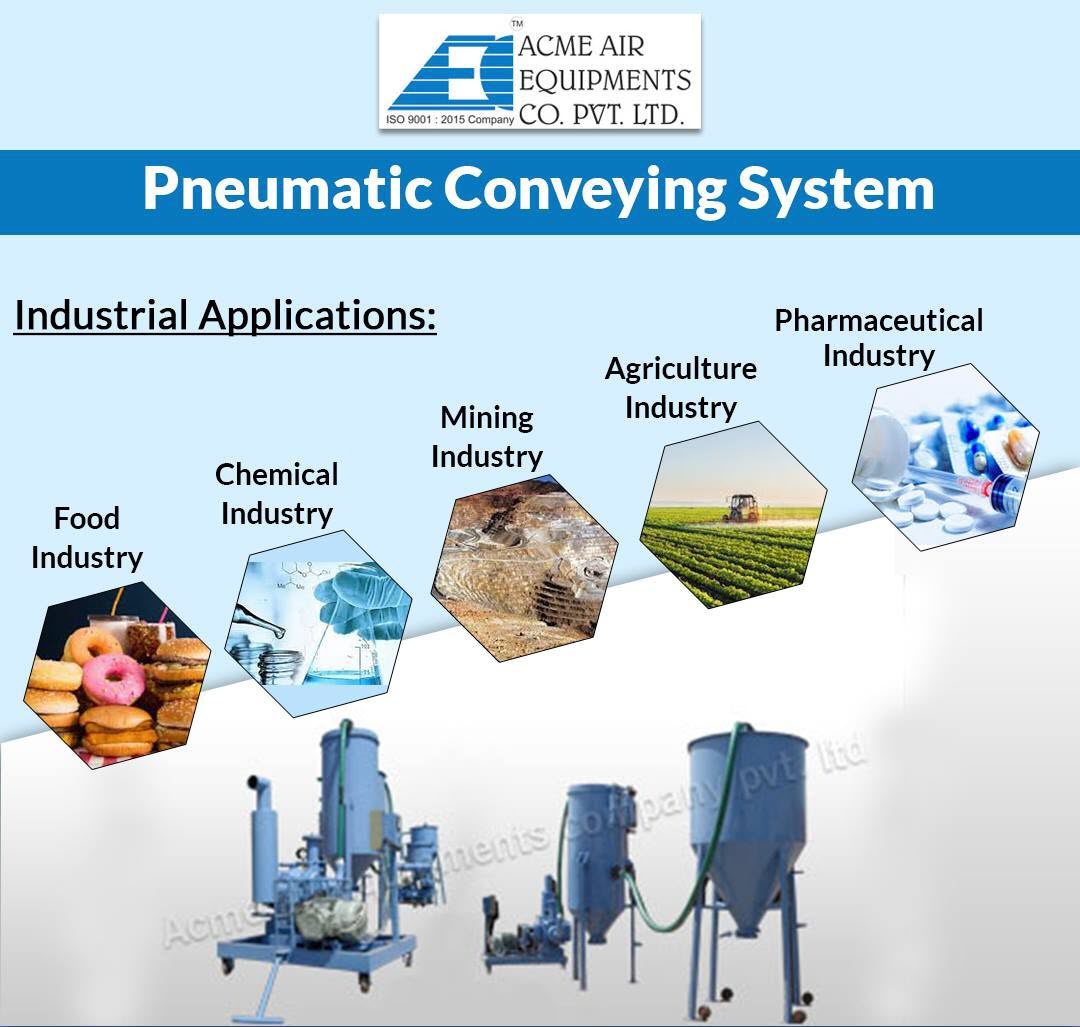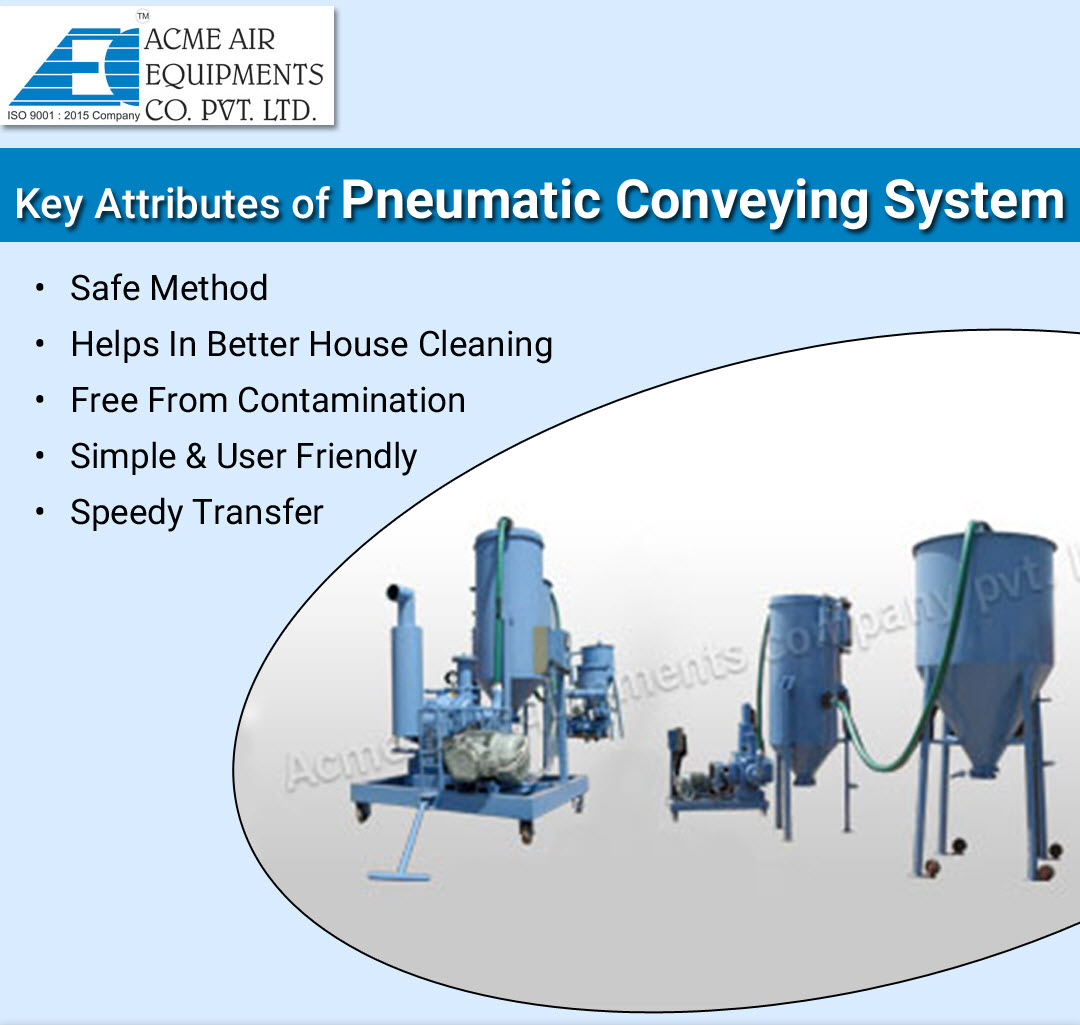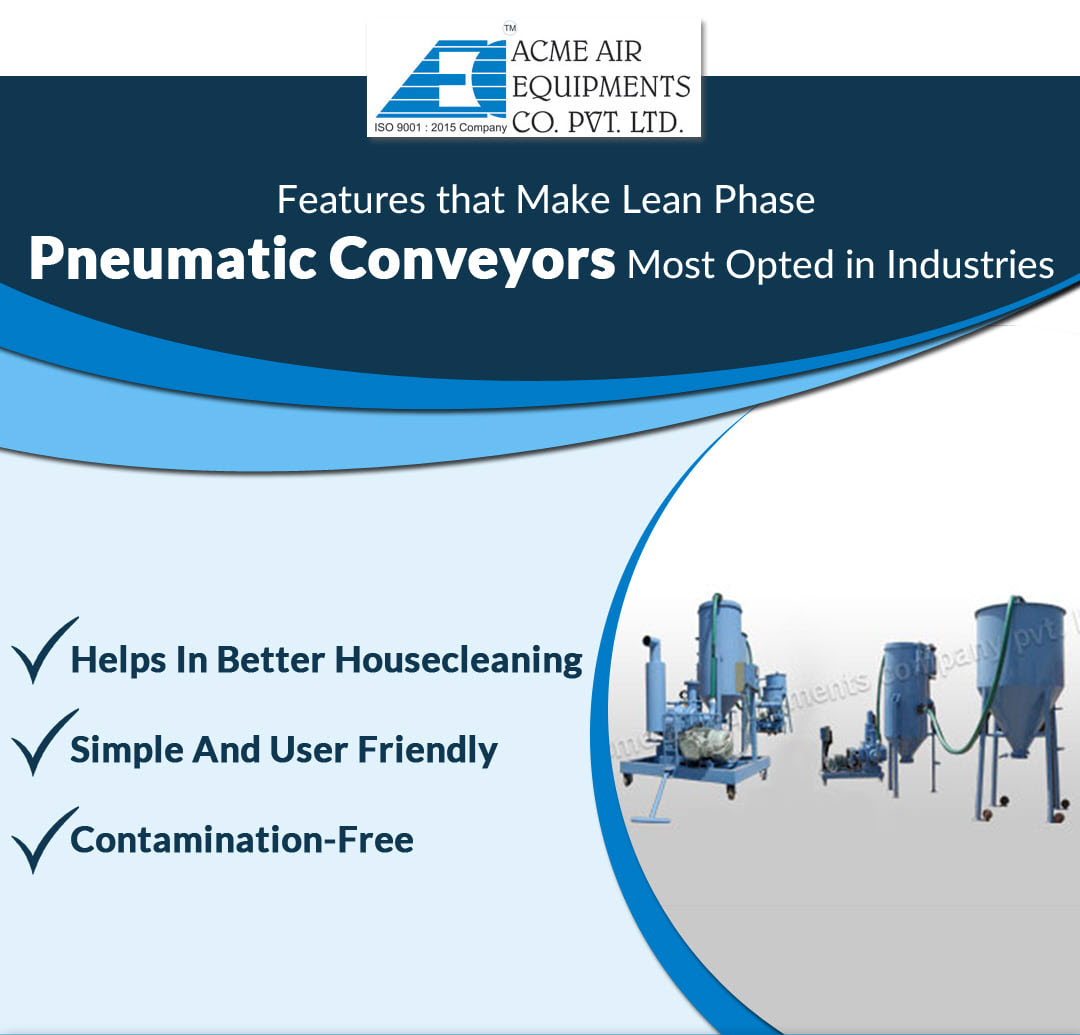Pneumatic Conveying Systems is the machinery used for transport of bulk solids through a pipe by using the flow of air or other gas. The typical bulk materials pneumatically conveyed are powders, pellets, granules, and irregularly shaped particles smaller than 20 mm. This Pneumatic conveying system is the most helpful option for material handling in the plastic industry. The pneumatic conveying equipments is ideal for moving plastic in granular or powder form in a fast and reliable manner. Plastic is a lightweight material and easily modified material and some of the largest sectors in terms of plastic usage are the construction, packaging, and automotive industry. Their applications also include companies that produce plastic materials for electronics or biomedical equipment where pneumatic conveyors are required for high-level conveying quality.
Advanced Applications of Pneumatic Conveyors in the Plastic Processing Industry
Pneumatic conveying systems play a vital role in modern plastic processing, ensuring the efficient transport of raw materials and finished products. These systems are indispensable for industries dealing with plastic resins, additives, and recycled plastic materials. Below are advanced applications specific to the plastic industry:
- Raw Material Transport:
Pneumatic conveyors are used to move plastic pellets, powders, or granules from storage silos to processing equipment, such as extruders, injection molding machines, or blow molders. This reduces manual handling, increases speed, and ensures consistent feed rates. - Recycling of Plastic Waste:
In the recycling sector, pneumatic systems are used to transport shredded plastic waste to washing, drying, and granulation units. The closed pipeline design prevents contamination and ensures efficient material recovery, contributing to the circular economy. - Handling of Additives and Fillers:
Plastic manufacturing often involves the addition of colorants, stabilizers, and other chemical additives. Pneumatic systems ensure precise and contamination-free transport of these materials to blending or processing units. - Flexible Conveying Solutions for Compounded Plastics:
The production of compounded plastics involves mixing plastic resins with fillers, reinforcements, and additives. Pneumatic conveyors provide flexibility by adapting to the diverse material properties and ensuring seamless transfer without material degradation. - High-Speed Operations in Packaging Plastic:
Pneumatic conveying systems are extensively used in industries producing plastic films, sheets, or containers. These systems transfer raw materials at high speeds to meet the demands of large-scale production, especially for the packaging industry. - Vacuum Transfer for Sensitive Applications:
In industries producing medical-grade plastics or plastic components for electronics, pneumatic vacuum conveying systems are used to transport raw materials under controlled conditions. This prevents contamination and ensures compliance with stringent quality standards.

Working Principle – The pneumatic conveyor principle is based on the fact that bulk goods can be moved to utilize air through pipelines. The flowing conveying air in the pneumatic system application transmits a propulsion force on the bulk material which conveys it through the conveying line. The pneumatic conveyor system is built on a pressure difference between the beginning and end of the pipeline. The conveying blowers or compressors are used for overcoming pressure differences.
Types of Pneumatic Conveyor Systems– The Pneumatic Conveying System come in two types, the vacuum conveying and the pressure conveying types. Vacuum conveyors are smaller and cause fewer temperature problems whereas the pressure conveyors are suitable for long-distance as well as multiple distances conveying.

Benefits of Pneumatic Conveying System–
- Less Maintenance required – The Pneumatic Conveyors have fewer moving parts and require very little maintenance compared to the mechanical conveying system. Since they have fewer moving parts, these pneumatic vacuum conveying systems also present less danger to operators.
- Less Spillage and dust leakage- These conveyors are enclosed and can easily be moved to fit around existing equipment. Since they are enclosed, these pneumatic air conveyor systems emit less dust and there are minimal problems of spillage.
- Energy Efficiency- The pneumatic conveying systems can use bulk raw materials which help in procurement of lowered material costs and thus an increased plant efficiency.
- Better Sanitation- Since the pneumatic conveyors have an enclosed pipeline, there is a very less risk of product contamination and the plant remains clear and clean. The piping of pneumatic conveyor systems can also be CIP cleaned and dried.
- Easy to Install- They are easy to install and there is an easy interface available with other process machines.
- Reduced Material Degradation:
Plastic pellets and powders are often sensitive to mechanical stress. Pneumatic conveying ensures gentle handling, preserving material quality and preventing fines generation. - Enhanced Production Efficiency:
Pneumatic systems allow continuous feeding of materials into production units, reducing downtime and increasing operational efficiency. - Scalability for Diverse Applications:
Whether for small-scale production or large industrial setups, pneumatic conveyors offer scalable solutions tailored to meet the specific needs of plastic processors. - Cost-Efficiency and Automation:
These systems reduce labor costs through automation and optimize the use of raw materials, minimizing wastage. - Clean and Safe Operations:
Enclosed pipelines prevent dust emissions and spillage, creating a clean working environment critical for plastic manufacturing.
Environmental Benefits of Pneumatic Conveying Equipment
The enclosed design of pneumatic conveyors not only minimizes dust emissions but also contributes to cleaner and safer work environments. This feature is particularly beneficial for industries handling toxic or hazardous materials. Furthermore, modern systems equipped with energy recovery units recycle airflow, significantly reducing the environmental footprint of material handling operations.
Innovations in Pneumatic Conveying Systems
Advancements in pneumatic conveying systems have led to more efficient material handling solutions. Modern systems now include smart sensors for real-time monitoring, predictive maintenance, and automated controls. These features enhance operational efficiency by reducing downtime and ensuring seamless operations. Moreover, energy-efficient air compressors and blowers minimize power consumption, making these systems environmentally friendly.
Specifications and selection criteria– While choosing a pneumatic conveyor, it is necessary to access the distance the material has to traverse. The other variables to be considered are the pipe size, line length, product density, and airflow rate. The filter, fan, and vents also play a crucial role if the product is dusty or toxic. One more feature that should be considered is adequate instrumentation that can help in troubleshooting in case of any error.
With the application of pneumatic systems in many sectors, Acme Air Equipments as pneumatic conveyor manufacturer offers, the highest quality pneumatic conveying systems in India and across the world.

Emerging Trends in Pneumatic Conveying for Plastics
- Integration with Industry 4.0:
Modern pneumatic systems for plastics are equipped with IoT sensors and automation controls, providing real-time monitoring, predictive maintenance, and enhanced production tracking. - Eco-Friendly Material Handling:
With increasing emphasis on sustainability, pneumatic systems are being designed to handle biodegradable plastics and recycled polymers efficiently.
Energy-Efficient Designs:
Advances in blower and compressor technology have led to energy-efficient pneumatic systems that lower operational costs and reduce carbon footprints.
Characteristics – Most of the models manufactured by pneumatic conveying system manufacturers are equipped with control panels that can be customized as per the specification of the clients. These conveyors are used in many pneumatic applications, and can achieve high-intensity production rates due to their extreme power in terms of speed as well as quantity conveyed. The advanced technology ensures that the material drawn is filtered most finely and keeps the environment very safe for the operator. In the conveying of plastics, it is important to take care of the material characteristics like particle density, shapes, and sizes. Renowned manufacturers of pneumatic converting systems offer efficient modern systems that can convey a wide range of materials for a large production volume.
Challenges and Solutions in Pneumatic System Applications
While pneumatic conveying systems offer numerous benefits, certain challenges may arise, such as wear and tear of pipeline components, clogging, or difficulty in handling abrasive materials. To address these issues, manufacturers now use wear-resistant materials, optimized pipe designs, and advanced filtration systems. Regular maintenance schedules and training for operators also ensure system longevity and performance.



